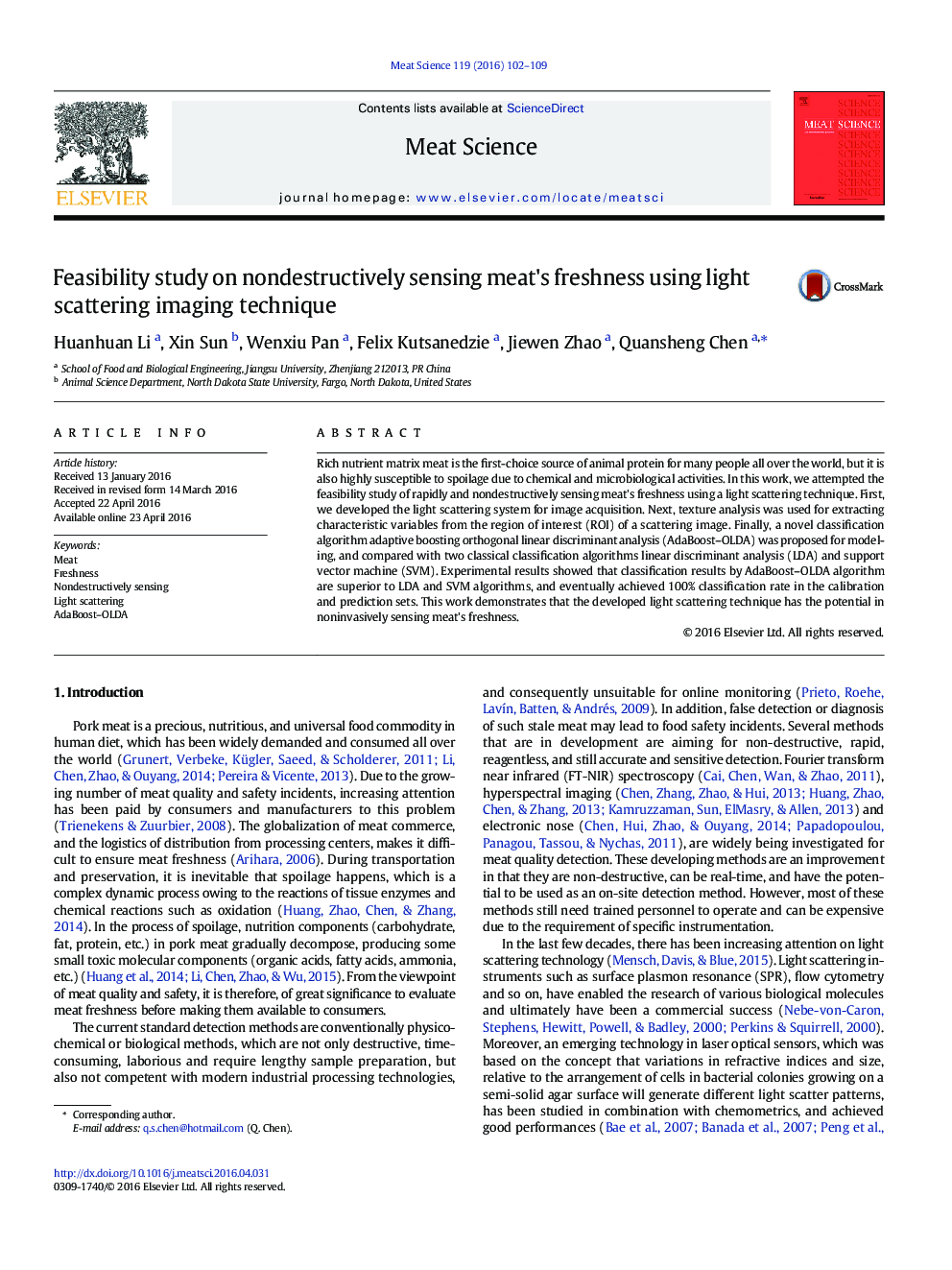| Article ID | Journal | Published Year | Pages | File Type |
|---|---|---|---|---|
| 2449372 | Meat Science | 2016 | 8 Pages |
•A light scattering system was developed to collect scattering images of three groups of meat.•A circular ROI with a radius of 140 pixels was extracted from each scattering image.•A novel classification algorithm AdaBoost–OLDA was used for modeling.•Fluorescent straining combined with CLSM was used to evaluate the feasibility of this study.
Rich nutrient matrix meat is the first-choice source of animal protein for many people all over the world, but it is also highly susceptible to spoilage due to chemical and microbiological activities. In this work, we attempted the feasibility study of rapidly and nondestructively sensing meat's freshness using a light scattering technique. First, we developed the light scattering system for image acquisition. Next, texture analysis was used for extracting characteristic variables from the region of interest (ROI) of a scattering image. Finally, a novel classification algorithm adaptive boosting orthogonal linear discriminant analysis (AdaBoost–OLDA) was proposed for modeling, and compared with two classical classification algorithms linear discriminant analysis (LDA) and support vector machine (SVM). Experimental results showed that classification results by AdaBoost–OLDA algorithm are superior to LDA and SVM algorithms, and eventually achieved 100% classification rate in the calibration and prediction sets. This work demonstrates that the developed light scattering technique has the potential in noninvasively sensing meat's freshness.
